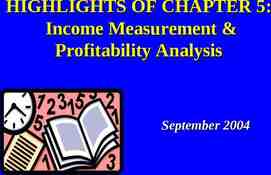Info sessions on 2010 pay equity maintenance April 2016
18 Slides615.40 KB

Info sessions on 2010 pay equity maintenance April 2016

Pay Equity Act Human Resources The purpose of the legislation is to redress differences in compensation due to the systemic gender discrimination suffered by persons who occupy positions in predominantly female job classes. 2

Pay Equity Legislation Human Resources Steps: – Determine job classes (example PED34, ADM2A, Painter, librarian, ) – Determine gender predominance of each job class – Determine value of job classes – Determine maximum hourly rate of each job class – Make regression of male job classes (compensation versus value) – Compare positioning of female job classes versus regression curve of male job classes – Make adjustments to salary for all employees of female job classes requiring increases 3

Pay Equity Legislation Human Resources Determine gender predominance of job classes – 60% women female predominance – 60% men male predominance – Between 40% and 60% neutral job class (completely eliminated from the maintenance) 4

Pay Equity Legislation Human Resources Determine value of job classes – Qualifications – Responsibilities – Physical and mental effort – Working conditions The value of all these job classes were determined in 2001 by a pay equity committee with representatives from all employee groups Example: second cook: 134 points, PED153: 261 points 5

Determine salary rate Salary rate used is the maximum of the salary scale applying to the job class Not the actual salary paid to an employee nor the average salaries paid to all employees in the job class Human Resources – 6

Human Resources Make regression analysis Apply a regression analysis to the job classes with male gender predominance Regression of hourly rates versus values of job classes According to agreement signed with MUNACA in January 2013, the regression used is an exponential formula 7

Regression results of the 2010 pay equity maintenance for male positions maximum hourly rate 16.669 x e (.0023 x number of Hay points) Exponential regression pay equity 2010 f(x) 16.67 exp( 0 x ) R² 0.88 100.00 Maximum hourly rates Human Resources 120.00 80.00 60.00 40.00 20.00 - 0 200 400 600 800 1000 1200 1400 Hay points 8

Human Resources Positioning of female job classes Compute the “pay equity” hourly rate of all feminine job classes with the regression formula If the “pay equity” rate is higher than the actual rate, adjustment is needed If the “pay equity” rate is lower than the actual rate, no adjustment is needed Example 1: PED 119 with 312 points 16.669 x e (.0023 x 312) 34.16 vs actual maximum rate of 33.97 ( 0.57%) Example 2: PED 34 with 194 points 16.669 x e (.0023 x 194) 26.04 vs actual maximum rate of 27.80 (no change) 9

Human Resources Feminine job classes with required pay equity adjustments PED 119 (Laboratory Coordinator) 0.57% PED 156 (Nursing Coordinator) 7.85% PED190 (Electron Microscopy Coordinator) 4.91% PED 194 (Chief Research Technician) 1.24% ADM4C (Mainly legal services) 0.15% SAF4A (Mainly Enrollment) 0.86% Landscape Gardener 6.0% Full Librarian: 28.16% Regular Research Assistants: 30.11% Casuals Group A: 26.69% 10

Human Resources How will the adjustments be computed? Extract on a monthly basis a list of all employees working at McGill in any positions (starting with the month of December 2010) “Sift” every single monthly file to extract every employee who was at one point in time in one of the affected job classes After the compilation of a comprehensive list of affected employees, extract detailed information on every single paycheck received by each of these employees (including info on regular hours, overtime hours, vacation pays, etc.) received in each of these pay checks 11

Human Resources How will the adjustments be computed? Extract for each of these employees their career history at McGill (all salary increases, temporary assignments, rematches of position, transfer to another position, etc.) Reconstruct every salary policy since 2010 for all employee groups (renewal of collective agreements, economic increase in salary scales, progression in scale, across the board adjustments, merit increases, , to be sure to apply the same increase to the adjusted pay equity rates) 12

Human Resources How will the adjustments be computed? Every single affected employee will be individually processed on a pay per pay basis checking with his/her individual career information The difference between: – the actual pay checks received between December 2010 and the date of payment – and what the pay checks should have been with pay equity adjustments – equals the retro payment Current salary will be increased, if required – Depends on the career progression since 2010 Terminated, deceased or retired employees are also entitled to retro payments – Please keep your contact information up-to-date 13

Who is responsible for the cost of pay equity maintenance? Human Resources Retro payments and interest up to actual payments date is paid from a central account – Including payments to employees paid by non operating funds Salary increases after the actual payments date will be funded by the local units 14

What about income tax and other deductions? Human Resources The pay equity retro payment is considered income and taxed as such – McGill will try as best as possible to deduct income tax at the highest marginal tax rate applicable – You are still responsible for possible additional income taxes to be paid when you file your income tax return Employee and McGill contributions to the pension plans will also be computed retroactively considering effective rates of contributions during the past years and your age at each of prior pay dates Contributions to QPP, QPIP, EI or similar programs are also deducted Retro payments are subject to legal interest rates – No deductions are made on interest payments but will be taxable when filing income tax returns 15

Next steps Human Resources First posting until May 30 – Comments received during info sessions – Comments received to [email protected] – Difficult to answer all individual comments Cannot confirm if individual will received retro or not McGill to confirm if any changes will apply or not due to comments received prior to June 28 Second posting of 60 days until end of August – During that period, employees could file complaints to CNESST – Coordinates of CNESST included in posting 16

Next steps Review of complaints by CNESST, if any Human Resources – Then, processing of computation of retro payments – Could take a few months Will also take a few months Processing of December 2015 pay equity maintenance – CNESST extended deadline to end of 2016 – Still realistic ? Next pay equity maintenance due in December 2020 17

Human Resources Questions ? ? 18






